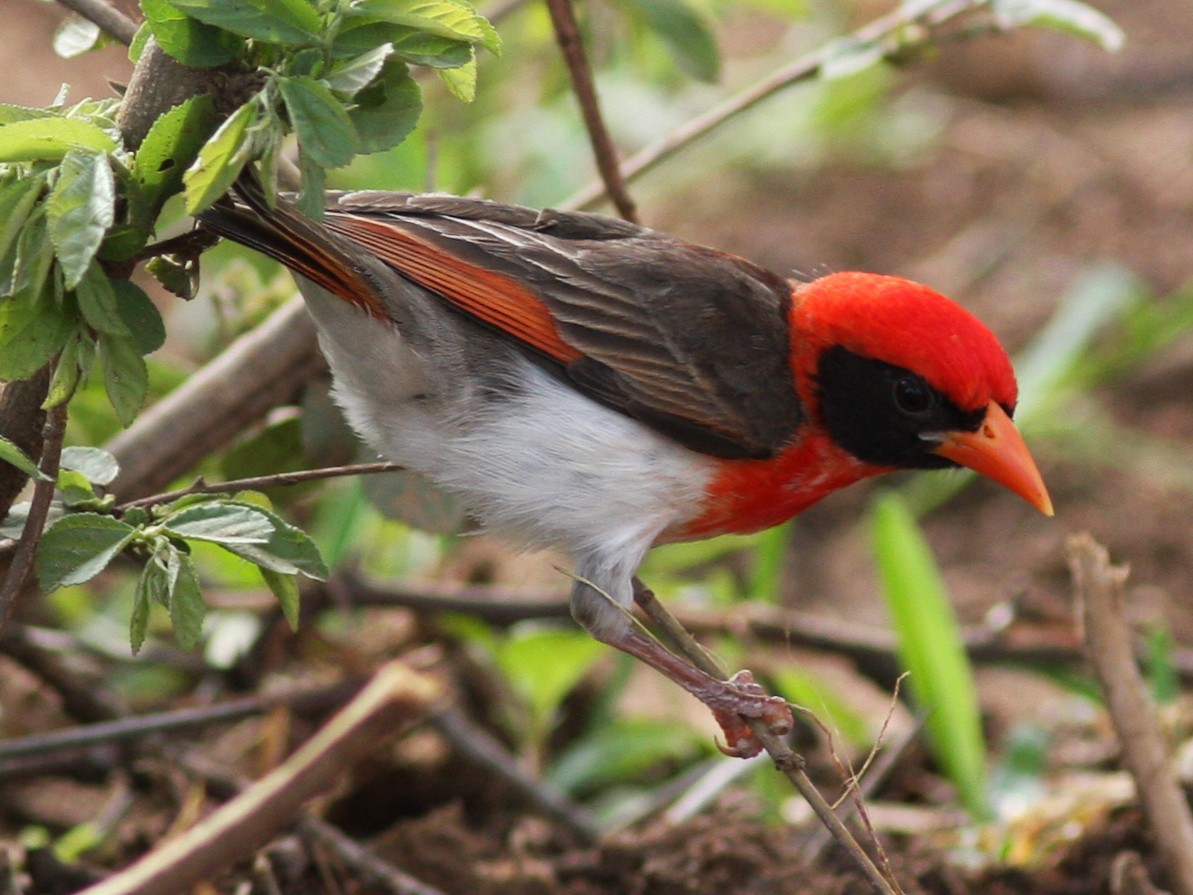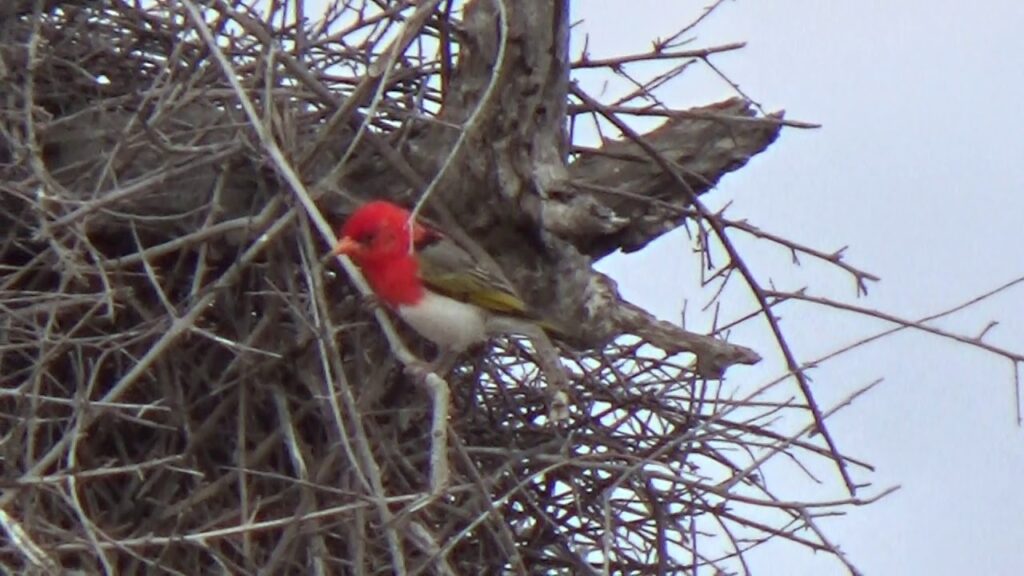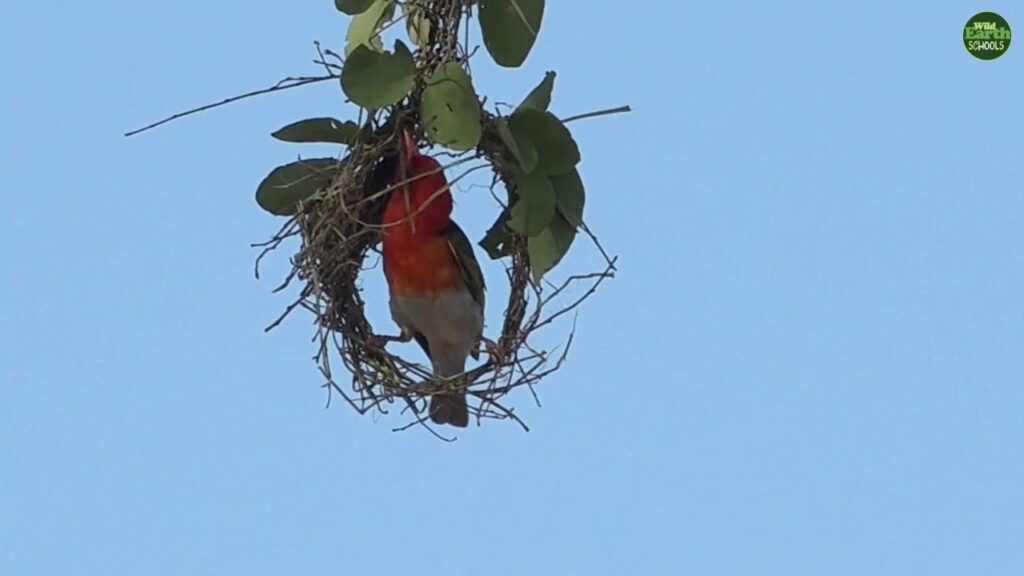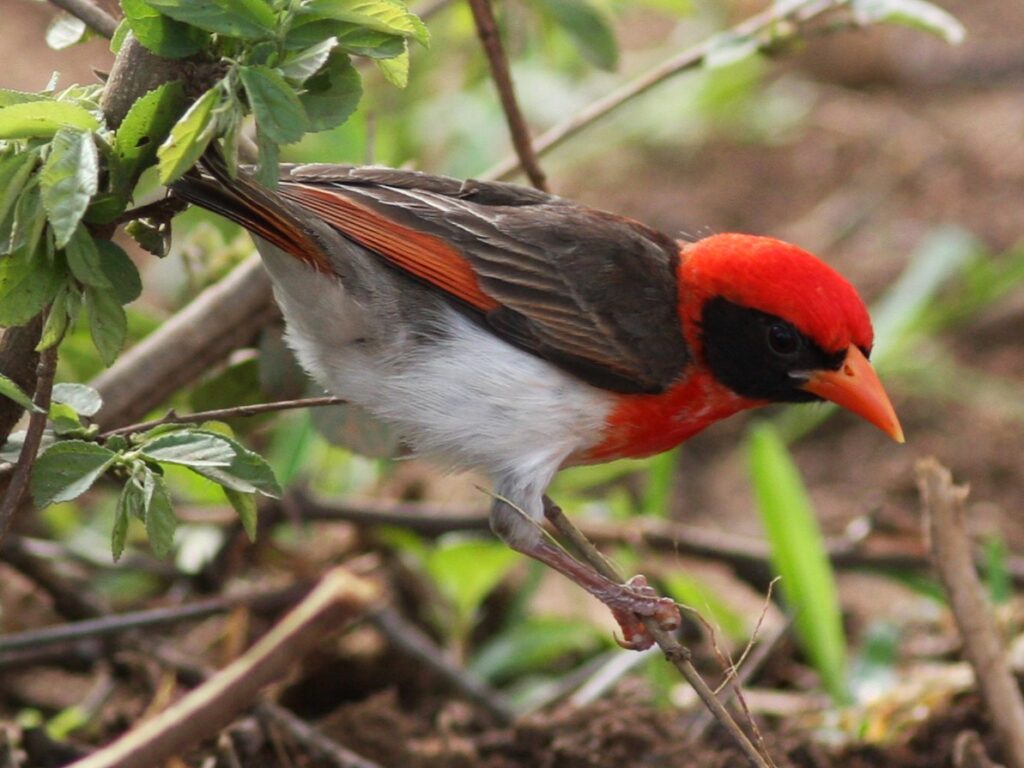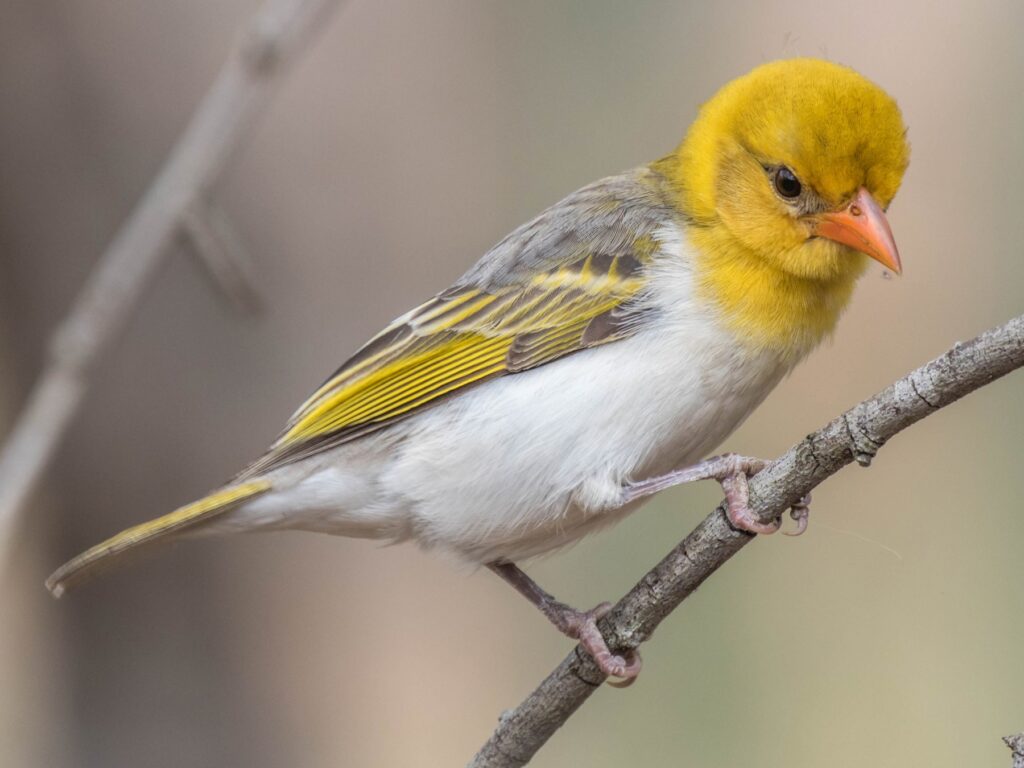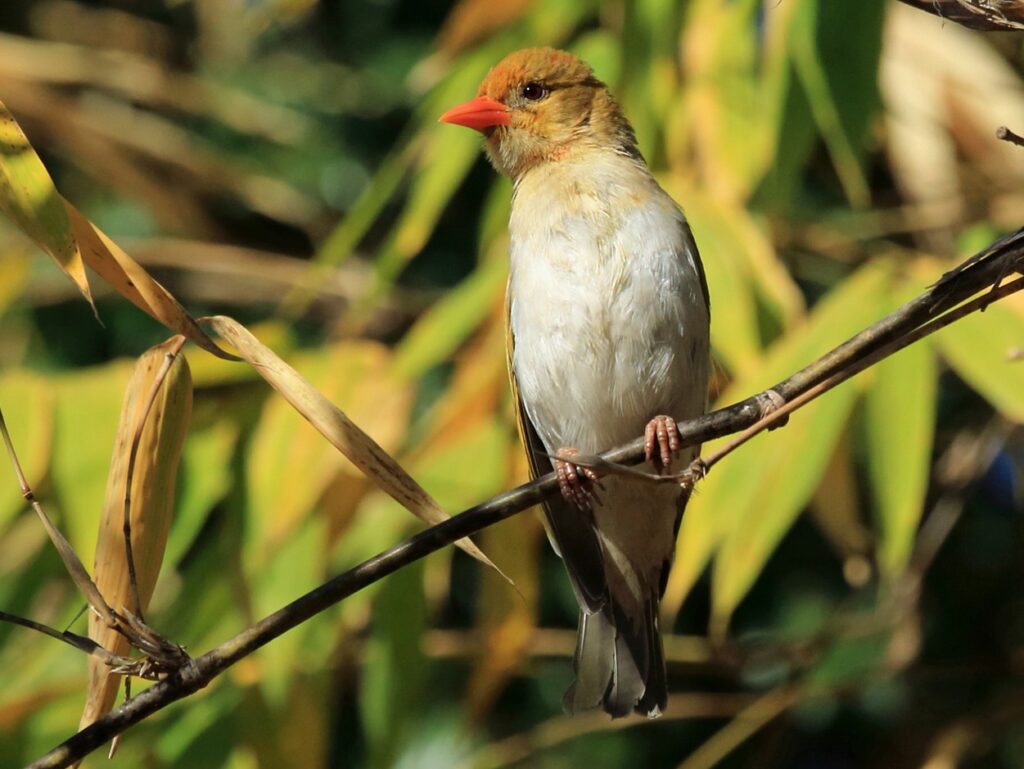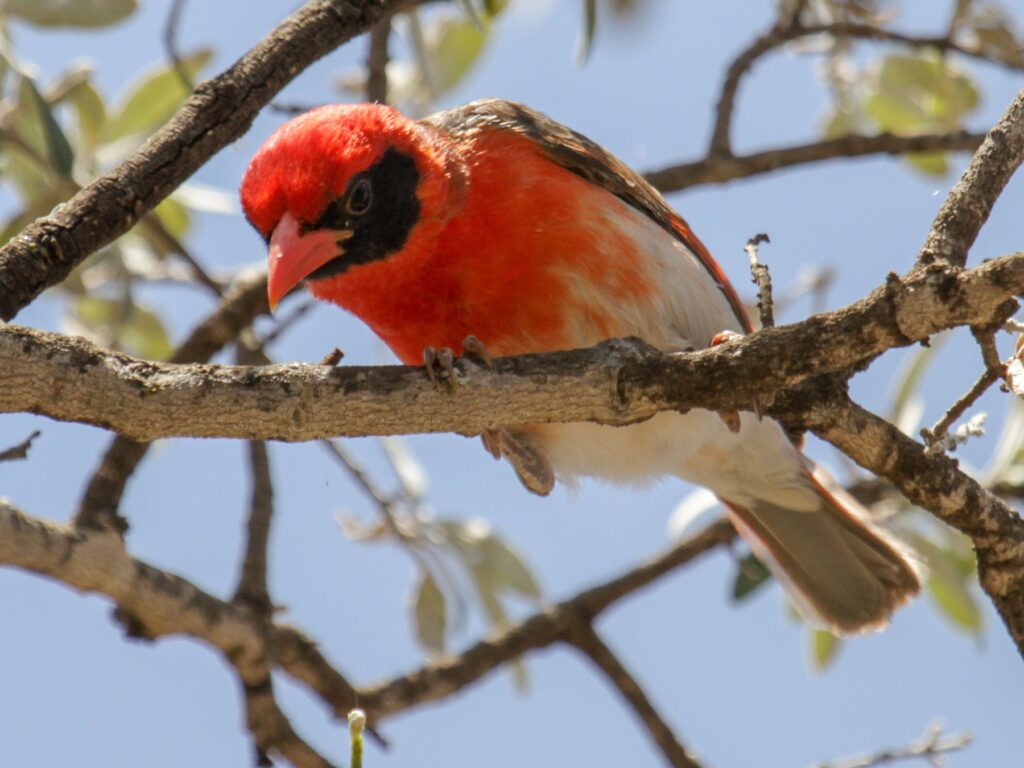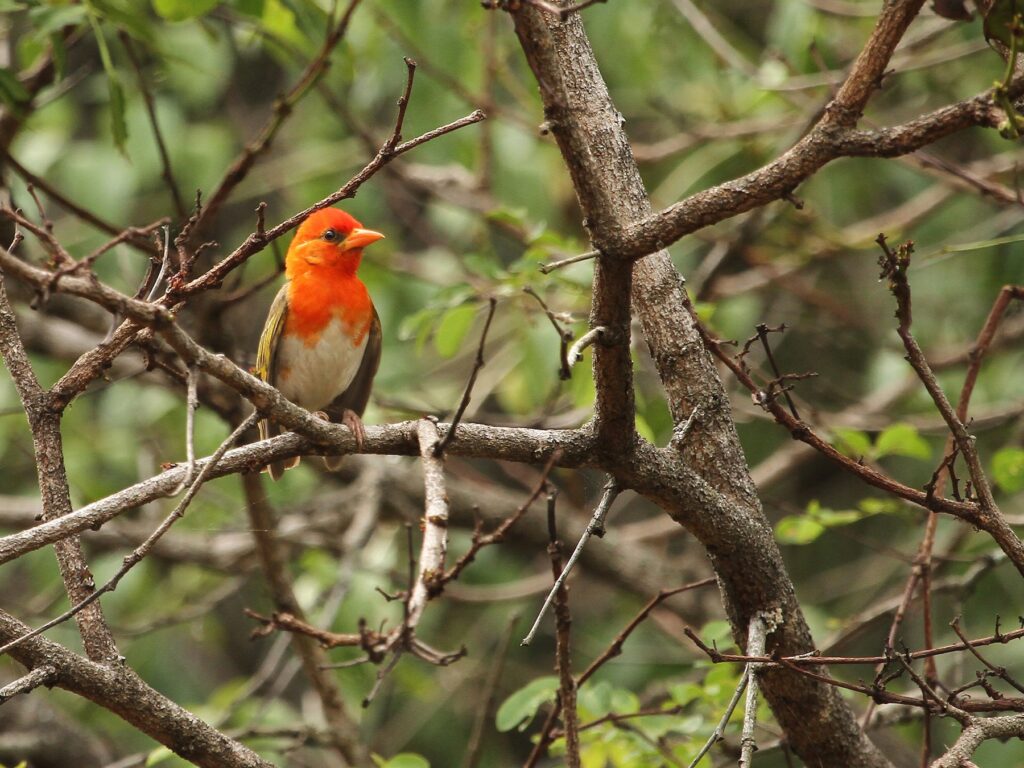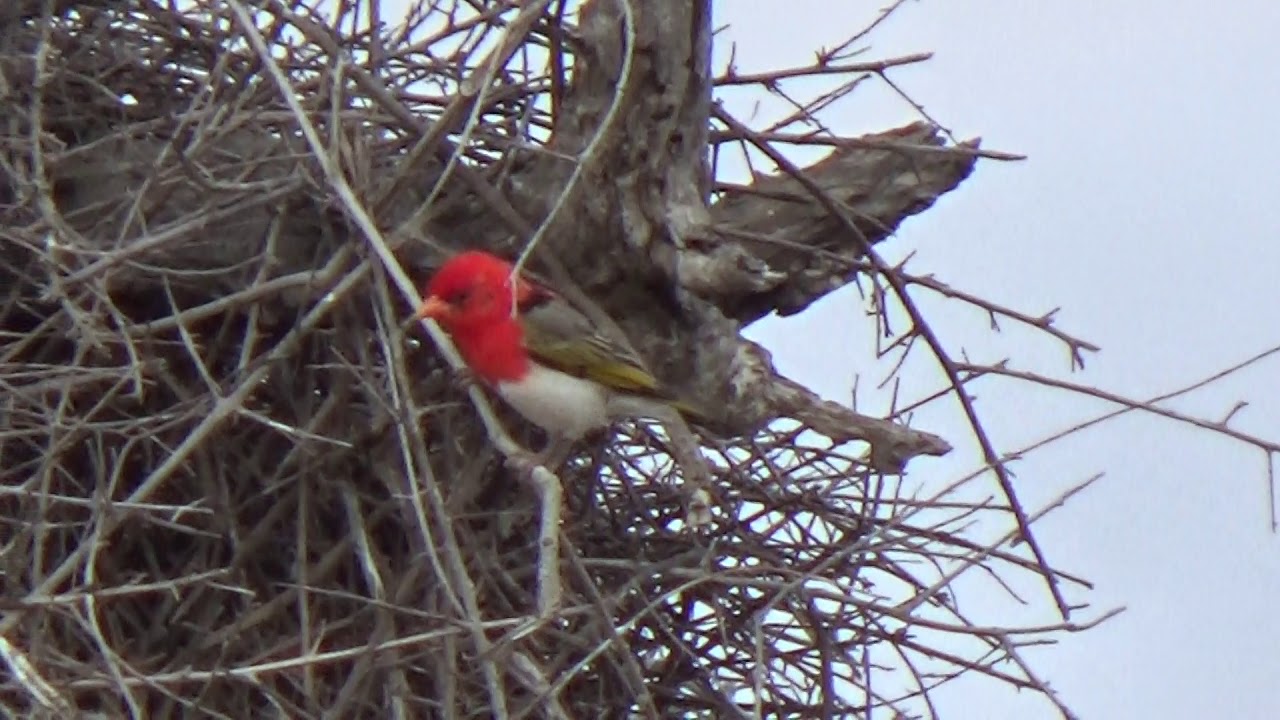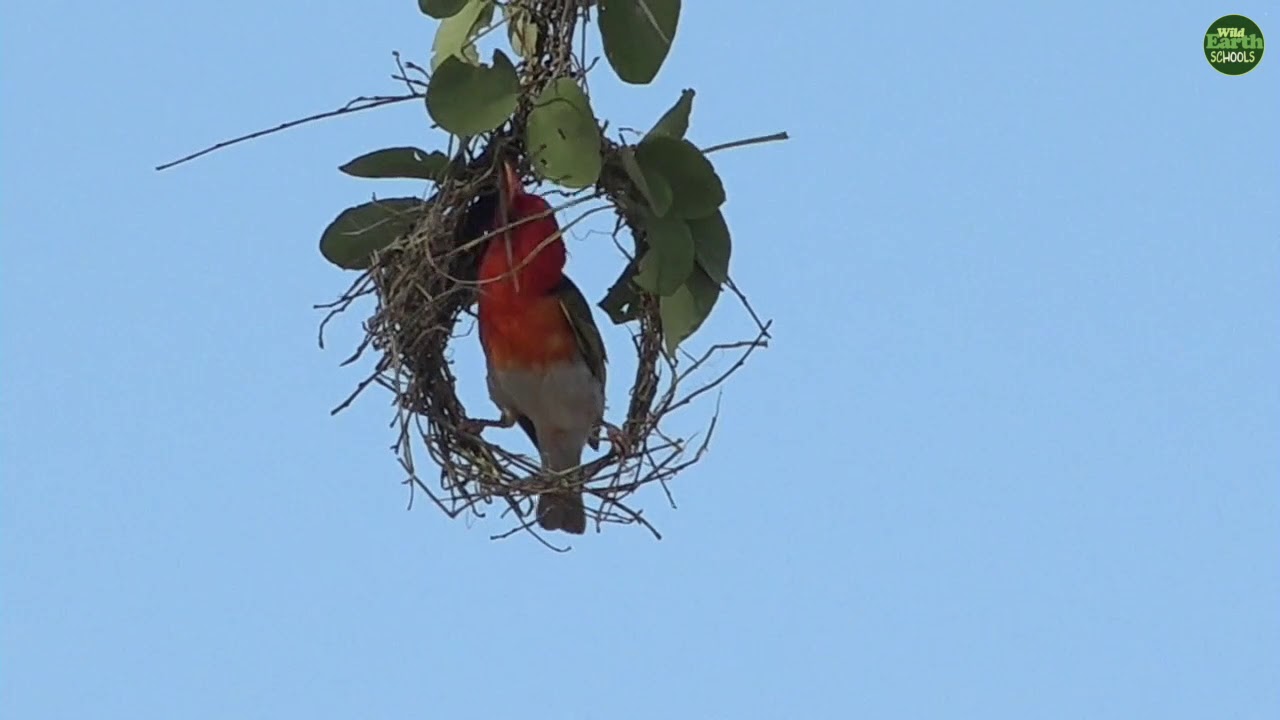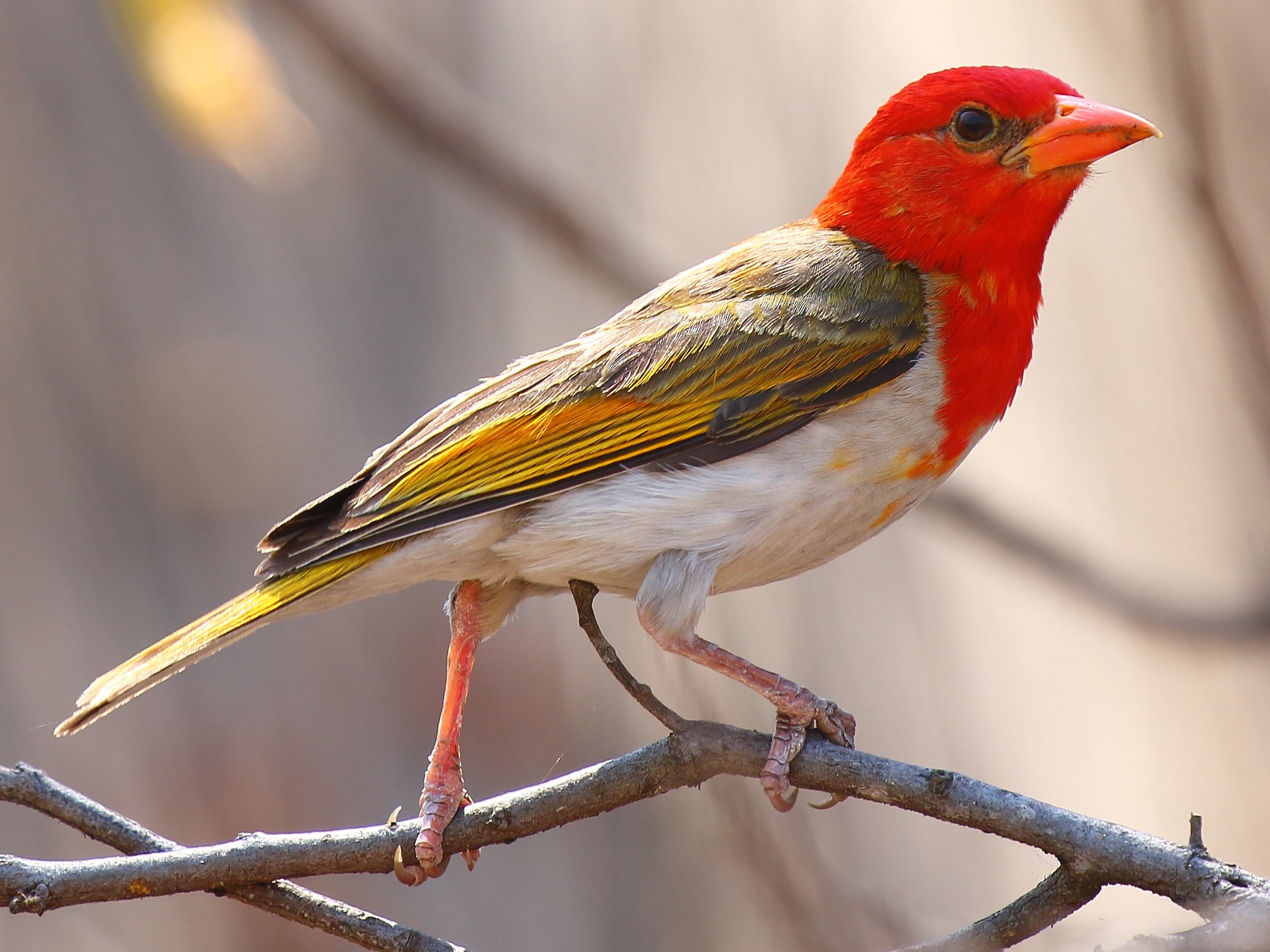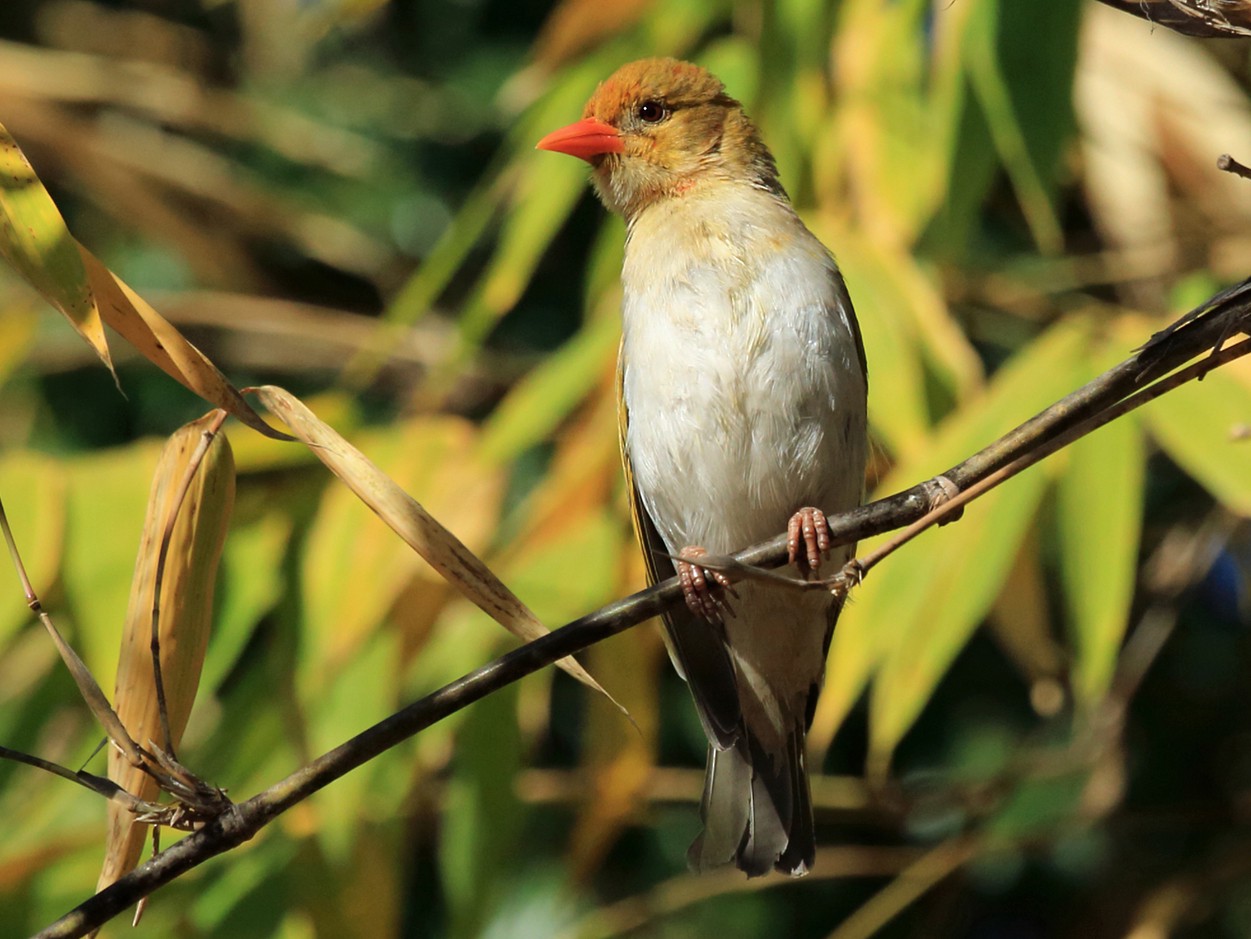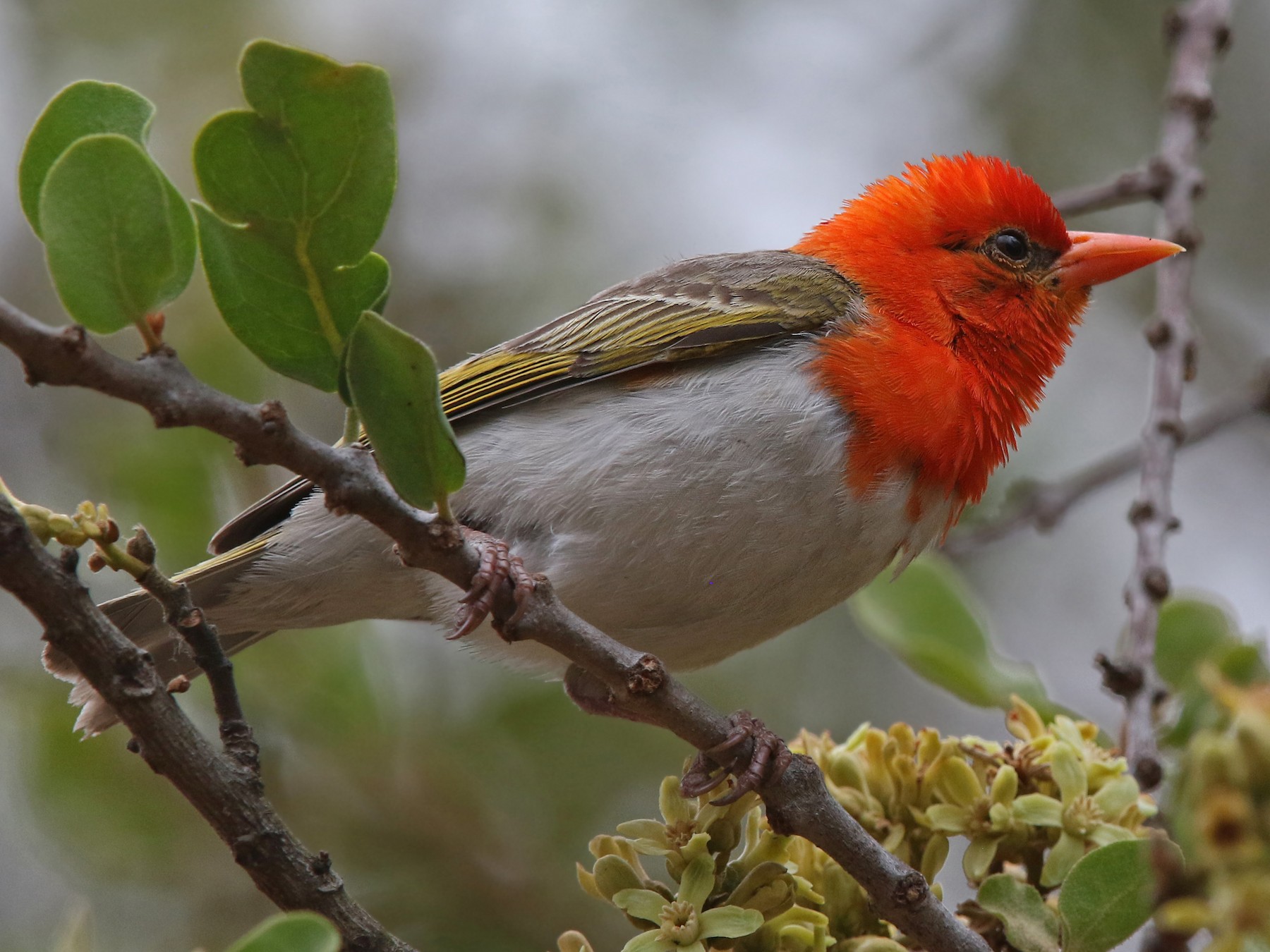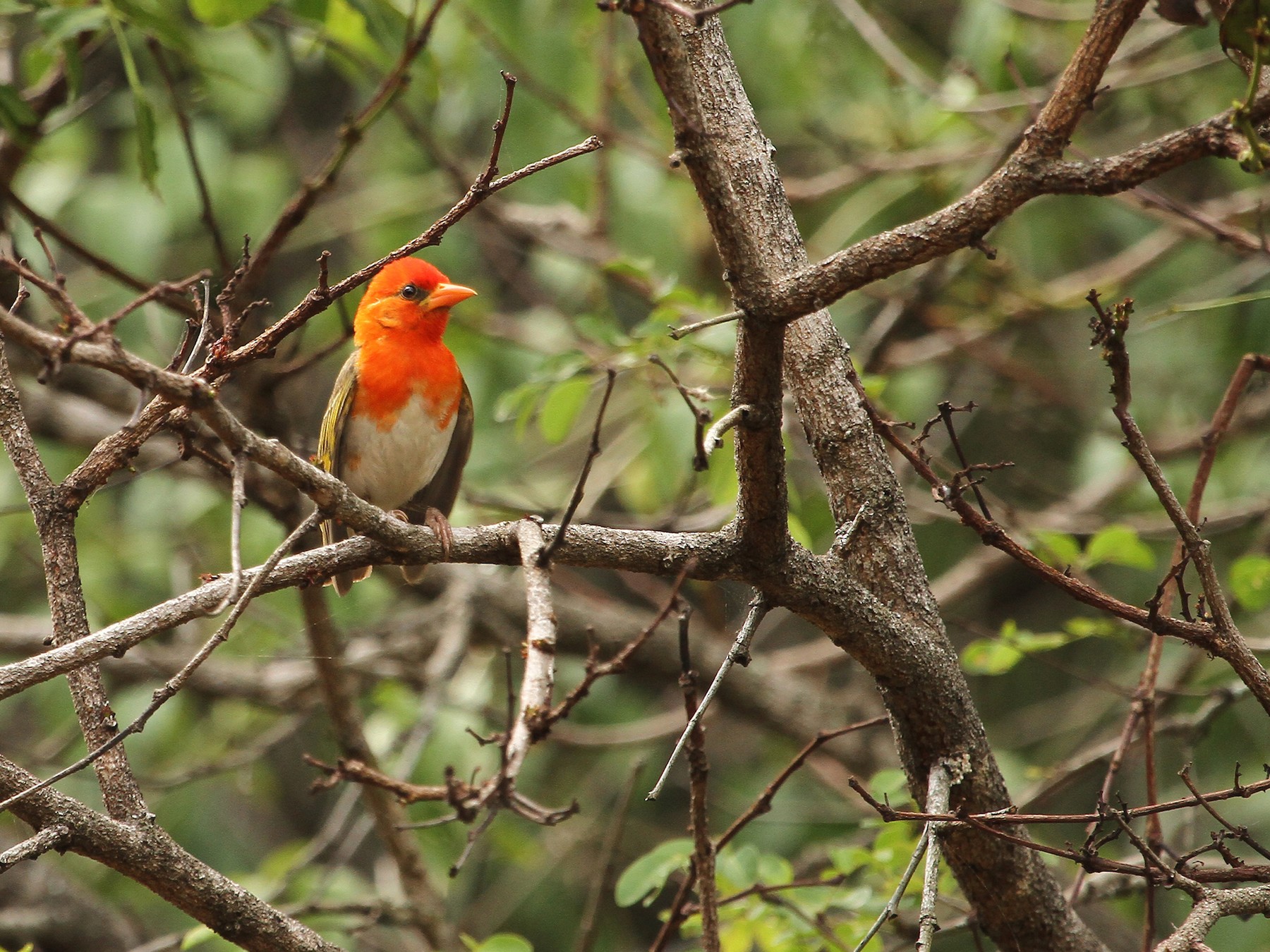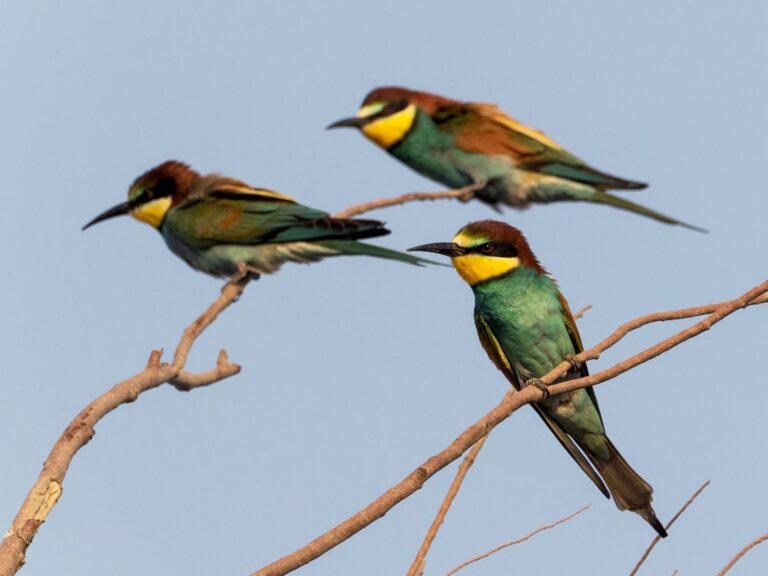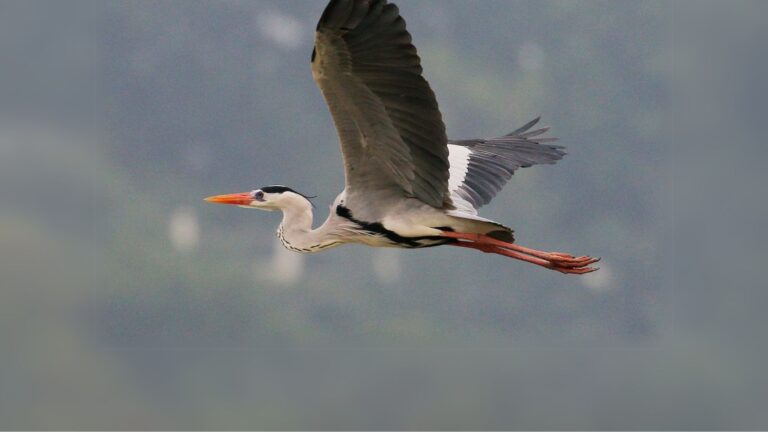Red-headed Weaver: Discover the Remarkable Nest Builder of Africa
Overview of the Red-headed Weaver
The Red-headed Weaver stands out for its vibrant head coloring and its knack for adapting to all sorts of African habitats. When it comes to weaverbirds, this one’s got a look and personality that’s hard to miss.
Scientific Classification
Known to science as Anaplectes rubriceps, the Red-headed Weaver is part of the Ploceidae family. First described back in the nineteenth century, it pops up in woodlands and savannahs all over sub-Saharan Africa.
It used to get mixed up with other weavers, but after some taxonomic reshuffling and a closer look at its features, it’s now clearly placed in Anaplectes (sometimes you’ll see Malimbus, but that’s rare these days). Several subspecies exist, and they show off some interesting regional differences in plumage and size.
Researchers keep digging into its classification, especially as fresh info comes out about its plumage and how it molts. For example, the subspecies A. r. jubaensis shows some cool regional quirks. If you’re into the nitty-gritty, check out this review on plumage dimorphism and moult patterns.
Distinctive Features
Male Red-headed Weavers are hard to miss during breeding season: their heads and breasts blaze bright red. Females and non-breeding males play it a bit more low-key, with muted reds or even yellowish hues.
The bird’s look shifts with the seasons, especially in some regions. The bold red head set against a more understated body gives it a pretty dramatic appearance—almost like it’s wearing a mask.
Medium-sized body, a chunky conical bill, and strong legs made for weaving—those are the basics. These weavers build elaborate nests, sometimes right near raptors (which, interestingly, helps keep other predators away). There’s a study on this nesting association if you’re curious.
You’ll spot them in both woodlands and savannahs. Field guides say their call is a sharp, repetitive “chee” or “chip”—easy to pick out if you’re listening for it.
Quick table of what to look for:
| Feature | Description |
|---|---|
| Head Color | Bright red (males), yellowish or duller in females |
| Bill | Conical, black to horn-colored |
| Habitat | Woodland and savannah, sub-Saharan Africa |
| Nesting | Woven nests, often near raptors |
Habitat and Geographic Distribution
The Red-headed Weaver has spread itself across much of Africa, showing a real knack for finding suitable woodlands. You’ll find it in places like southern Africa, Zimbabwe, Namibia, and parts of Ethiopia, among others.
Preferred Woodland Environments
These weavers like open or semi-open woodlands, especially where acacia, mopane, or miombo trees are around. They’ll also use riverine forests and savannahs.
They show up in wooded farmlands and gardens, particularly where there are plenty of trees but not too much thick undergrowth. Sometimes, they even use man-made structures for nests if natural sites are scarce—there’s a neat mention of this from Zimbabwe.
They’re picky about branches for nest-building, steering clear of dense forests and barren, dry plains. They also seem to prefer spots near water or seasonal streams, probably because food and nesting supplies are easier to come by.
Key Regions in Africa
The Red-headed Weaver ranges from Ethiopia, across East Africa, and down through much of the south—including South Africa, Zimbabwe, and Namibia. Populations are patchy but cover a lot of ground. You’ll see more of them in Zimbabwe’s mixed woodlands and Namibia’s open savannahs.
Here’s a quick look at where you might run into them:
| Region | Presence |
|---|---|
| Ethiopia | Common |
| Zimbabwe | Widespread |
| Namibia | Frequent |
| South Africa | Localized |
| Botswana | Present |
They’re not big fans of deep rainforests or the driest deserts. In Zimbabwe, there’s some cool variation in how they use man-made nest sites, as shown in recent studies.
Habitat in Kruger National Park
In Kruger National Park, you’ll spot Red-headed Weavers in open woodland and along river edges. Acacia and mopane trees are their favorites for nesting. Nests usually cluster in small colonies, with birds picking spots that offer both some cover and a good view. Water sources like streams and waterholes make these areas even better for feeding and nesting.
Kruger’s variety of habitats attracts all sorts of birds, but Red-headed Weavers are especially well-suited to the park’s woodland-grassland mix. Their nests and foraging style make them a regular sight for anyone wandering through the bushveld.
Diet and Feeding Behaviour
The Red-headed Weaver eats a mix of foods, changing things up depending on what’s available and the season. It goes after both animal and plant foods, using whatever foraging tricks work best at the time.
Insect Consumption
Insects make up a big chunk of their diet. These weavers hunt caterpillars, beetles, termites—you name it—often picking them off leaves or tree bark. Their strong, pointed bills help them dig out prey from crevices.
They sometimes join mixed-species foraging flocks, especially when breeding and needing extra protein. Observations in Zimbabwe and Nigeria show them searching for insects in tree canopies, where the leaves are thick and the pickings are good.
They don’t mind chasing termite swarms, snatching insects on the fly with quick, agile moves. Feeding peaks in the morning and late afternoon, when insects are most active. For more, check this detailed study on nest sites and foraging.
Fruit Foraging
Insects are crucial, but these birds also eat plenty of fruit. They look for berries and soft, ripe fruits, usually foraging higher up in the canopy or at woodland edges.
This flexibility helps them get by when insects are hard to find. They’ll switch to more fruit if the dry season drags on or if breeding needs change. Sometimes, this brings them close to farms or gardens, where cultivated fruits are on offer.
They seem to especially like figs, wild berries, and, every now and then, crops from orchards. When fruit is plentiful, their feeding routes and flock patterns shift to follow it. Mixing insects and fruit keeps their energy up and lets them handle whatever the season throws at them.
Physical Description and Identification
The Red-headed Weaver’s bold coloring and shape make it easy to pick out, even for beginners. Males and females look quite different, mostly because of their plumage.
Coloration and Markings
Adult males show off a vivid red head that runs down to the throat and upper breast. Their bodies are mostly yellow-olive, with grayish wings and tails. Dark eyes, a chunky pointed bill—usually dark too—round out the look.
Females and young birds don’t have the red. Instead, they’re paler, with olive-brown or dull yellow-green upperparts and lighter bellies. The contrast between the male’s red head and body is a dead giveaway, while females and immatures look much plainer.
In flight, both sexes show pale patches on their wings—a handy field mark. Legs and feet are gray. The Ostrich journal has more on the scientific naming and synonyms for this species, if you’re into that sort of thing.
Sexual Dimorphism
There’s no missing the difference between the sexes. Males have that signature red on the head and sometimes the upper breast, but females don’t show any of it.
Females run smaller and keep things more muted in the color department. No red at all, and immatures look much the same. Males are a bit bulkier, with heavier bills—maybe handy for nest defense and foraging.
During breeding, the male’s colors get even brighter, which probably helps with attracting a mate. Knowing these differences is key if you’re trying to ID them in the field, especially in mixed flocks or when their plumage is changing.
Breeding and Nesting Habits
Red-headed Weavers have quite the reputation for building intricate nests and mixing up their breeding patterns. The way they build and the timing affects everything from colony size to nest placement and even which other birds hang around during breeding.
Unique Nest Architecture
Red-headed Weavers weave oval or flask-shaped nests out of grass strips, twigs, and fibers. They hang these tightly woven nests from tree branches—acacias and baobabs are favorites. Their nests last longer and stand up to rough weather better than most other weavers’ efforts.
Sometimes, a single tree holds several nests, so you’ll see small colonies, but often it’s just pairs or loose groups. Other birds, even some raptors, might use their nests too. Colony size varies, and some spots get reused year after year, depending on local conditions and the trees available. If you want to dive deeper, check out this report on nest sites and colony sizes in Zimbabwe.
Mating Season
Red-headed Weavers breed in pairs or small colonies. The timing depends a lot on local climate and rainfall. In some places, they nest around the rainy season, which lines up with when food for chicks is plentiful.
They don’t always use the same breeding sites every year, which shows some adaptability. Where and when they breed changes—sometimes they even build nests near those of raptors, maybe for a little extra safety. Some districts have seen weavers come back to the same sites, but not every single year. There’s more detail on this in studies on nesting sites.
Vocalisations and Song
The Red-headed Weaver has a range of calls for communication and socializing within colonies. People usually describe their calls as sharp and clear—short chirps and whistles, mostly.
Song ramps up during the breeding season. Males get more creative, stringing together trills, repeated phrases, and little warbles to impress potential mates.
Research suggests that song variety grows with colony size—bigger groups push for more diverse vocal repertoires. It helps with recognizing each other and holding onto territory. Check out more in recent research on song diversity.
Key features of Red-headed Weaver vocalisations:
| Call Type | Description | Typical Context |
|---|---|---|
| Contact call | Short, sharp chirp | Foraging, flock cohesion |
| Alarm call | Quick, repeated notes | Predator detection |
| Song | Simple trills and whistles | Courtship, territory |
You’ll hear these sounds near nests, usually from exposed branches or the tops of bushes. In places like Makueni, the song is a giveaway—birders mention it’s handy for picking out this species among others (Makueni birdlife).
Red-headed Weavers react to recorded calls, so researchers use playback to study how they communicate and respond. This method helps document their sound patterns and behavior, as discussed in avian field studies.
Conservation Status and Threats
The Red-headed Weaver, with its standout plumage and creative nests, faces different conservation issues across its range. Some populations are doing fine, but there are threats that could become bigger problems if ignored.
IUCN Assessment
Right now, the Red-headed Weaver is listed as Least Concern by the IUCN. It’s widespread across sub-Saharan Africa and does well in all sorts of habitats—savannas, woodlands, even gardens.
Globally, numbers look stable. Still, local habitat loss and fewer nesting sites—thanks to deforestation or farming—could be a problem down the line. The IUCN framework keeps tabs on the species to catch any early warning signs.
Regional Conservation Efforts
Some regions have started targeted projects to protect habitats and nesting trees. National parks and reserves give the birds and other wildlife a safe haven. In spots like Yamuna Nagar, bird surveys help track numbers and flag threats.
Local education campaigns aim to raise awareness about the value of nesting trees. Community involvement can cut down on small disturbances that mess with breeding. Good conservation really relies on a mix of solid habitat management and regular research to spot trends.
Frequently Asked Questions
The red-headed weaver stands out for its nesting, feeding, and social quirks. Its looks, calls, and choice of hangouts make it pretty different from other weavers.
How does the nesting behavior of red-headed weavers differ from other weaver birds?
They build nests with strips of grass, leaves, and twigs, usually out on the outer branches. Unlike many weavers that crowd together, these birds often nest solo or in small, loose groups.
Their nests can be a bit all over the place in shape—sometimes not as tightly woven as other Ploceidae. That’s one way to tell them apart from more colonial nesters.
What are the distinguishing characteristics of the male and female red-headed weaver?
Males show off a bright red head and breast, with a white belly and brownish back. Females look more muted—buff or brown heads, softer tones overall.
When breeding season hits, the males’ red gets even more vibrant. It’s a big part of how they attract mates and interact socially. Plumage dimorphism is pretty clear in this species.
What habitats are preferred by red-headed weavers for nesting?
They go for open woodlands, savannas, and spots with scattered trees. Dense forests? Not so much. They seem to like places where trees offer both cover and a good view.
Areas near water or with a mix of wild and human-altered land are popular. Preferences shift a bit depending on what’s available locally.
Can you describe the vocalizations of red-headed weavers?
They make high-pitched, sharp calls and repetitive chirps. Their songs aren’t as fancy as some finches, but you’ll recognize them after a listen or two. Both males and females use these sounds for socializing, defending territory, and talking to each other in pairs.
What is the typical diet of the red-headed weaver?
Mostly insects, spiders, and other small invertebrates—especially when breeding. They also eat seeds, berries, and fruit if bugs are scarce. You’ll see them feeding in trees and sometimes poking around on the ground. They’re pretty adaptable about where and how they find food.
How do red-headed weavers interact with other species in their ecosystem?
Red-headed weavers sometimes tag along with mixed-species flocks, which helps them spot predators a bit sooner. They might bump into other insect-eating birds while foraging, but they’re not usually looking for a fight and tend to steer clear of serious squabbles.
Brood parasites sometimes target their nests, which is rough, but these weavers also help keep insect populations in check. Regional studies have noticed subtle differences in their interactions depending on local conditions—nature rarely sticks to a single script, after all.
